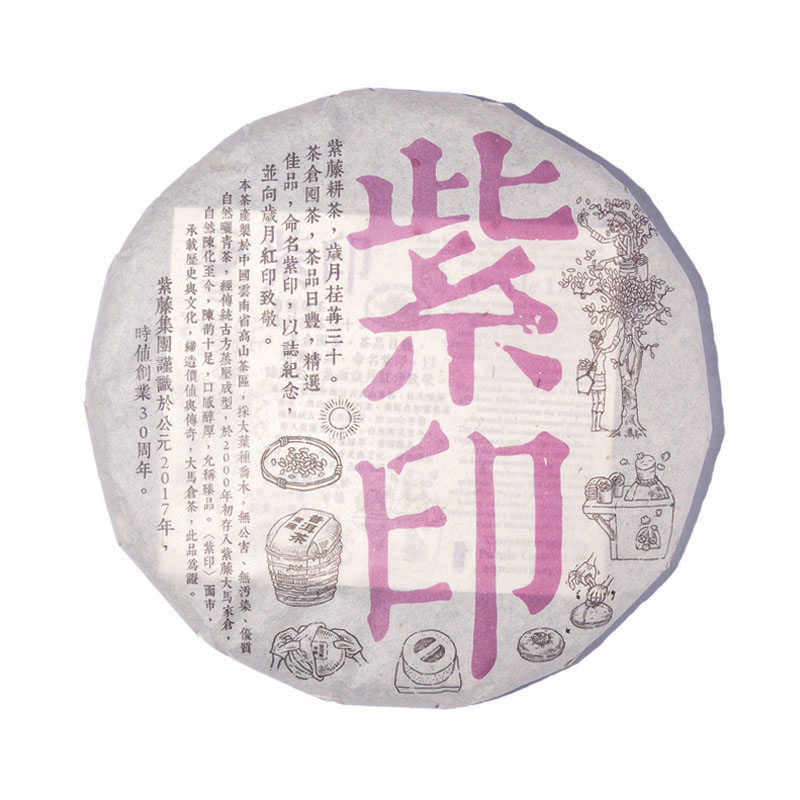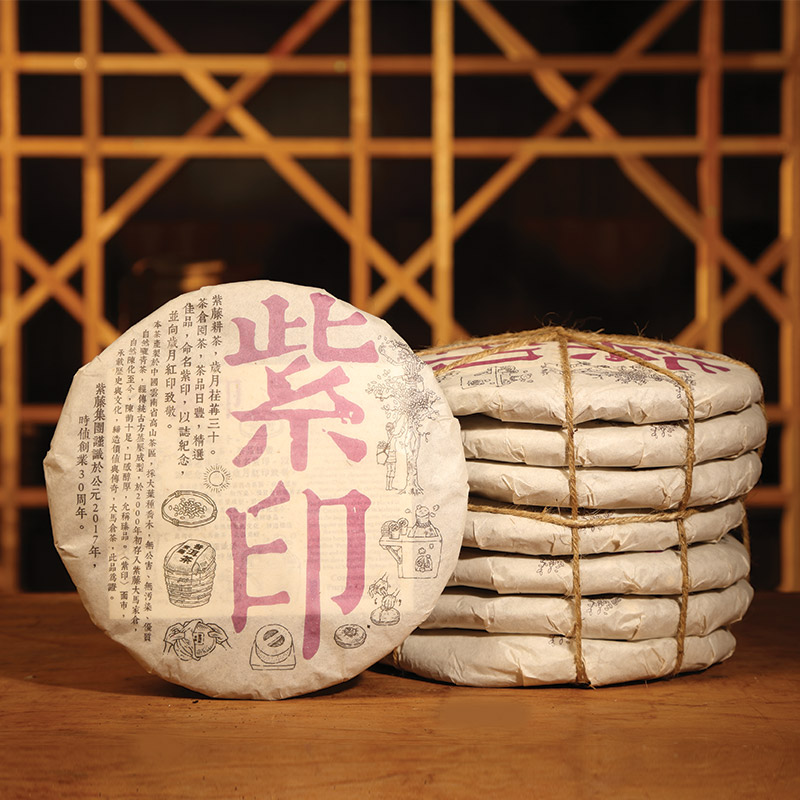Aged Raw Puer Tea | Purple Label 紫印 Year 2000
Yunnan Province, Xishuangbanna |Large-leafed Variety Raw Tea|357g ±| 2000| Puer Tea| Yellowish Red| Mellow| Strong
It has been 30 years since Purple Cane began cultivating its tea business. To commemorate this journey, we are introducing the 'Purple Label', which has matured beautifully into a premium tea with a wonderfully rich flavour, thanks to the extended storage. It is named as such to pay tribute to the vintage 'Red Label' teas.
Raw leaves were harvested from trees of the broad-leaf species from the contamination-free, zero-pollution high-altitude tea plantation in Yunnan province, China. The sun-dried green leaves underwent the traditional steamed-and-compressed process. The finished tea cakes were placed in Purple Cane's storage in Malaysia at the beginning of 2000.
Having undergone natural ageing over time, the tea has transformed into an exquisite beverage that is full-bodied and mellow. 'Purple Label' is steeped in history and culture, creating not just values but also a legend. It is a befitting icon of Malaysian Storage Puer.
Commemorating Purple Cane's 30th anniversary, 2017
Brewing Hints
Break off a well-sized portion of tea leaves from the tea cake, add to brewing vessel until ¼ filled. Pour in freshly boiled water at 85°C-95°C and drain the tea infusion immediately. 1st brew is not for drinking, the purpose is for the tea leaves to unfurl and moisten. This helps release the full flavour of tea for a satisfying brew.
For 2nd brew, refill the brewing vessel with about 30 Seconds to extract the full flavour. Pour and Serve. It is good for several brews. Re-steep the leaves in a similar manner to enjoy the tea as it develops from steep to steep; continue re-steeping until the leaves are exhausted of flavour.
The Producer
The Region
The full name of Xishuangbanna is Yunnan Xishuangbanna Dai Autonomous Prefecture (西双版纳傣族自治州). It locate at the south of Yunnan Province. The Six Famous Tea Mountains all locate in the Xishuangbanna. It is divided into 3 Counties, Menghai County (勐海县) on the left, Jinghong County (景洪市) in the middle and the Mengla County (勐腊县) on the right. The borders of Xishuangbanna join Burma and Laos. Because of its ideal climate, majority of the popular Chinese Puer tea is mainly grown and produces in Xishuangbanna.
Chart Price
Last Year
RM 0.00
This Year
RM 0.00
Difference





0 out of 0 reviewers recommend this product